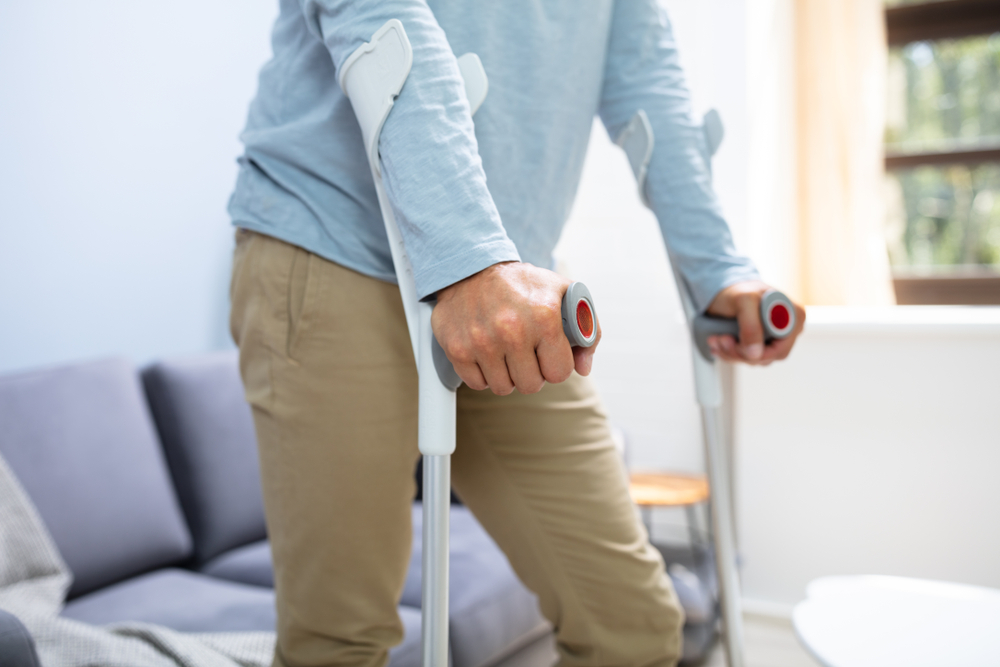What is an assistive device?
Assistive devices are items made to help a person perform a specific task. Some commonly used devices are crutches, canes, and walkers. There are various reasons why your provider may recommend using a device including pain, weakness, or poor balance. Sometimes people use an assistive device consistently throughout the day, especially if they’ve just had a surgery and are unable to bear weight on a limb. However, most times, people use their assistive device only as needed such as walking longer distances in the community, ambulating over uneven surfaces, or negotiating stairs. When first learning to walk with an assistive device it can be challenging to coordinate a new walking pattern.
Which arm should I use to carry my device?
As a general rule, one should carry their cane or single crutch in the opposite hand of the injured leg. This allows the cane to offset some of the forces on the injured leg while walking. By balancing these forces, the assistive device may help improve balance and decrease pain. The main goal of walking with an assistive device is to perform a normal stepping pattern including stepping through with each foot. This means that with each step forward, the foot in front should step past the opposite foot. This will improve the efficiency of walking and provide more symmetry with each step. During your therapy session, your therapist may focus a portion of your treatment on gait training to improve coordination when using a device. There are specific patterns of walking with the device to improve efficiency and safety. It is important to remember that everyone has different needs with their own therapy, so these are simply guidelines rather than set rules.
How do I carry groceries?
Even when rehabbing after an injury, individuals still need to carry on with life including running errands and carrying bags or groceries into their home. Adding another object to carry can further complicate walking with a painful or weak leg. It is quite important to be sure that you have appropriate balance before adding a carrying exercise into walking. Kinesiologists have broken down the components of one’s body weight, use of a cane, and the external weight of a bag in relationship to the forces placed on the hip joint. Carrying a bag using the same arm as the weak leg can help decrease the forces on the hip joint and facilitate walking. Ultimately, physical therapy will assist in strengthening the hip musculature to support one’s body weight and any additional external weight. However, while one continues to recover, carrying a bag on the same side as the involved leg can be helpful in decreasing hip pain when walking.
Jill Hoffman PT, DPT is a physical therapist specializing in treating orthopedic conditions.

